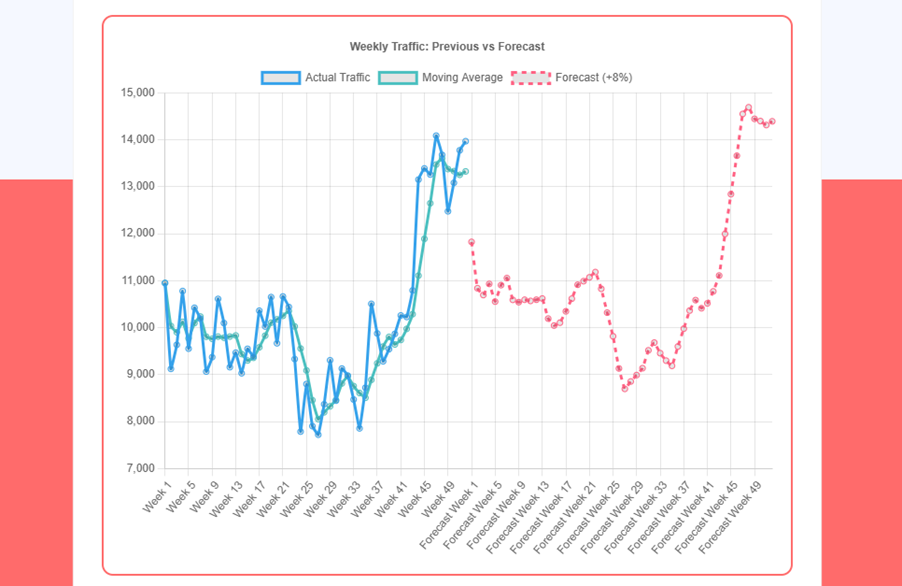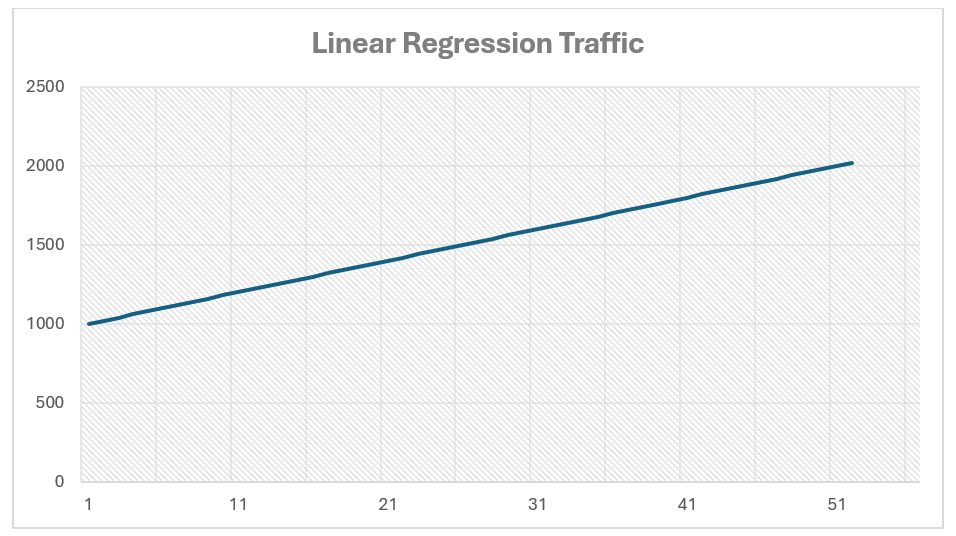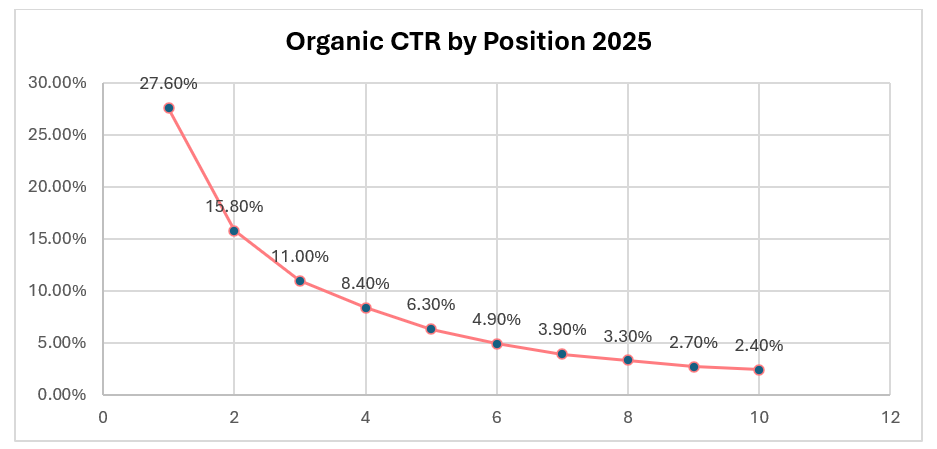
How to forecast for SEO
SEO Forecasting
SEO forecasting is the process of predicting organic search traffic growth.
There are different use cases for forecasting:
- Yearly Channel Growth
- Stakeholder Buy In & Estimating site changes
Estimating SEO Traffic for yearly channel growth
Many SEO’s talk about different methods to forecast SEO such as:
- Linear regression
- Moving Average + growth %
- Keyword Improvement and CTR estimations
Linear Regression
Linear regression will forecast a linear uplift in traffic based on historical trends. It’s a nice quick and easy forecast, just use excels forecast formula function (Simple linear regression). It can give an indication of what traffic could be like. However, it is often too positive and a little unrealistic, as it does not take seasonality into account. This can cause issues when comparing against actual performance, as the forecast may overestimate expected traffic during low seasons or underestimate it during high seasons. You could combine this with a moving average to stablise the forecast.

Moving Average + growth %
A moving average alone is a bit more flexible as a forecast method, you can decide whether to forecast using a 4 weekly, 6 weekly moving average and so on. It takes seasonality into account, so the forecast trends will match those of your previous year, making the forecast look more stable and realistic. Often adding a % growth on top of the moving average is a good way to align with top-down business targets or control growth. Our Organic Traffic Forecasting Tool uses this method and showcases a weekly forecast vs the historical performance and moving average in a graph as seen below. The tool also provides the weekly data in an excel, including the YoY difference in an excel sheet.

Then from traffic, Conversion and AOV (Average Order Value) run rate, you can estimate transactions and revenue.
Keyword Improvements + CTR uplift
For a long time, SEO’s have been estimating traffic uplifts based on SEO strategy planning, which involves improving specific keywords positions. SEO’s estimate the new clicks from the improved positions CTR and current Impressions. CTR x Impressions = Clicks. For example, if you rank 4th for the keyword SEO Tool and predict you would be able to move it to position 2, you will use your impressions x the position 2 CTR below which is 15.80%, to generate the new clicks. After you have done these calculations for your target keyword improvements, you can work out the click difference uplift for each keyword and overall.

This forecasting method used to be more stable. However, over the last 2 years with the rise of AI search, AI overviews and more PPC ads in search results year on year, CTR is more unpredictable than ever. Use this forecasting method with caution, it may be more effective for lower page 1 positions to improve rather than current top 3-4 position improvements.
Whichever method you choose for yearly channel growth, just remember to try not to overpromise and communicate the resource requirements needed to hit growth targets.
Stakeholder Buy In
In some industries it can be hard to get buy in, resource and support from senior leadership for SEO. Senior leadership often like hard facts and data presented for a business case with revenue attached.
There are two ways to forecast buy-in:
- If you are fortunate enough to have buy-in to develop proof of concepts and testing resource, you can estimate gains from SEO test results.
- Create a conservative projection based off hypothesis using internal or external data.
Proof of Concept
From an SEO test that has a positive uplift of 15% on the test group against what was forecasted and a 13% uplift vs previous period, you can use the 13% as an uplift on all similar template/subfolder pages traffic and then use the conversion and AOV run rate to calculate transactions and revenue.
You can also then calculate the potential revenue benefit by comparing it to current revenue to get the actual benefit of £X more and X%. If it’s for a 4-week period, divide the benefit by 4 and calculate the yearly benefit too.
Projections
Creating projections can be tricky. You can look at external data sources for help if you have no previous examples or case studies to work off.
For example, if you want to justify reinstating a page into the homepage navigation after it was removed, you can estimate the potential traffic and revenue loss due to the drop in visibility.
Start by identifying the queries that drive the majority (e.g., 70%+) of the page’s traffic. Then, assume a modest drop in average position (e.g., by 0.5–1 rank) for each of these queries. Remove this from the query positions and then calculate the NEW CTR for each position and times this by impressions to get the clicks.
Subtract the estimated new clicks from the current clicks to get the traffic loss. Aggregate this across all key queries to estimate the total traffic loss.
Finally, apply your current conversion rate and average order value (AOV) to project the corresponding drop in transactions and revenue.
Use formula breakdown:
CTR x Impressions = Clicks.
Clicks x Conversion Average (Run rate) = Transactions.
Average Order Value (AOV Run Rate) x Transactions = Revenue.

